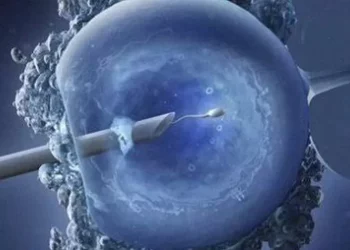Infertility is a growing concern worldwide. Historically, much of the focus has been on female infertility, but recent studies show that male infertility is also on the rise. This issue is multifaceted, involving genetic, environmental, lifestyle, and medical factors. Understanding the reasons behind the increasing rates of male infertility is crucial for developing effective treatments and prevention strategies.
1. Genetic Factors
Genetic factors play a significant role in male infertility. Chromosomal abnormalities, such as Klinefelter syTop 10 Common Reasons for Rising Male Infertility Ratesndrome, can affect sperm production and quality. Microdeletions in the Y chromosome are another genetic cause. These deletions can disrupt genes crucial for sperm development.
Moreover, genetic mutations in specific genes like CFTR (Cystic Fibrosis Transmembrane Conductance Regulator) can lead to congenital bilateral absence of the vas deferens (CBAVD), a condition where the tubes that carry sperm from the testicles are missing. Advances in genetic testing have made it possible to identify these conditions, but the prevalence of such genetic issues appears to be increasing.
2. Environmental Toxins
Environmental toxins are a major contributor to the rise in male infertility. Pesticides, industrial chemicals, and heavy metals like lead and mercury can negatively impact sperm quality and quantity. These substances can disrupt endocrine functions, leading to hormonal imbalances that affect sperm production.
Phthalates and bisphenol A (BPA), commonly found in plastics, are known endocrine disruptors. They mimic or interfere with the body’s hormones, leading to reduced sperm count and motility. Studies have shown that men exposed to high levels of these chemicals have lower sperm quality.
Air pollution is another significant factor. Fine particulate matter (PM2.5) and other pollutants can lead to oxidative stress in the testes, damaging sperm cells. Urbanization and industrialization have increased the levels of these pollutants, correlating with the rise in infertility rates.
3. Lifestyle Factors
Lifestyle choices greatly influence male fertility. Diet, exercise, and habits like smoking and alcohol consumption can all impact sperm health.
Diet and Nutrition
A poor diet can lead to nutritional deficiencies that affect sperm production. Diets high in processed foods, trans fats, and sugars can contribute to obesity and metabolic syndrome, which are linked to lower sperm quality. Conversely, diets rich in antioxidants, vitamins, and minerals support healthy sperm production.
Obesity
Obesity is a growing epidemic globally and is closely linked to infertility. Excess fat tissue can lead to hormonal imbalances, such as increased estrogen levels and decreased testosterone levels. These changes can impair sperm production and function.
Physical Activity
Regular physical activity is beneficial for overall health and sperm quality. However, excessive exercise, particularly cycling, can lead to genital trauma and elevated scrotal temperatures, which negatively affect sperm production. Balance is key to maintaining optimal reproductive health.
Smoking and Alcohol
Smoking introduces harmful chemicals into the body that can damage sperm DNA and reduce sperm count and motility. Alcohol, particularly in excessive amounts, can also impair liver function, leading to hormonal imbalances that affect sperm production.
4. Medical Conditions
Certain medical conditions can contribute to male infertility. Varicocele, a condition characterized by enlarged veins in the scrotum, is a common cause. It can lead to increased scrotal temperature and reduced sperm production.
Other conditions, such as infections (e.g., mumps orchitis), autoimmune diseases, and endocrine disorders like hypogonadism, can also affect fertility. Additionally, treatments for diseases like cancer, including chemotherapy and radiation, can damage the testes and reduce sperm production.
See Also: Do All Varicoceles Lead to Infertility?
5. Medications and Treatments
Many medications can impact fertility. For example, anabolic steroids used for muscle building can significantly reduce sperm production. Medications for hypertension, depression, and other common conditions can also have side effects that affect sperm quality.
Cancer treatments are particularly impactful. Chemotherapy and radiation can lead to temporary or permanent infertility. Advances in oncofertility have made it possible to preserve sperm before treatment, but the overall impact of these treatments remains a concern.
6. Age and Infertility
Age is another important factor in male fertility. Unlike women, men can produce sperm throughout their lives, but the quality of sperm declines with age. This decline can lead to lower fertility rates and an increased risk of genetic abnormalities in offspring.
7. Psychological Factors
Psychological stress can also contribute to infertility. Stress can lead to hormonal imbalances that affect sperm production. Furthermore, the psychological impact of infertility can create a vicious cycle, where stress exacerbates the condition.
8. Technology and Lifestyle Changes
Modern technology and lifestyle changes have also played a role in the rise of male infertility. The increased use of laptops and mobile phones, particularly when placed close to the groin, can raise scrotal temperature and affect sperm production. Additionally, sedentary lifestyles associated with long working hours and reduced physical activity can contribute to obesity and metabolic issues, further impacting fertility.
9. Societal and Occupational Factors
Societal changes, including delayed parenthood and increased work-related stress, have also contributed to rising infertility rates. Many men are choosing to start families later in life, which can affect fertility due to age-related decline in sperm quality. Occupational hazards, such as exposure to toxins, radiation, and excessive heat, can also impair fertility.
10. Preventive Measures and Treatment
Addressing male infertility requires a comprehensive approach that includes lifestyle modifications, medical treatments, and assisted reproductive technologies (ART).
Lifestyle Modifications
Adopting a healthy lifestyle is crucial for improving fertility. This includes maintaining a balanced diet rich in antioxidants, vitamins, and minerals, engaging in regular physical activity, and avoiding smoking and excessive alcohol consumption.
Medical Treatments
Medical treatments for conditions like varicocele, infections, and hormonal imbalances can improve fertility. Hormone replacement therapy and medications to boost sperm production are also available.
Assisted Reproductive Technologies (ART)
ART, including in vitro fertilization (IVF) and intracytoplasmic sperm injection (ICSI), can help couples conceive when natural methods fail. These technologies have advanced significantly, offering hope to many couples facing infertility.
Conclusion
The rise in male infertility is a complex issue influenced by genetic, environmental, lifestyle, and medical factors. Addressing this problem requires a multifaceted approach, including lifestyle changes, medical interventions, and the use of assisted reproductive technologies. Increased awareness and research are essential for developing effective prevention and treatment strategies to combat this growing concern.
By understanding the underlying causes and taking proactive measures, it is possible to mitigate the impact of male infertility and improve reproductive health outcomes for future generations.
Related Links:



























